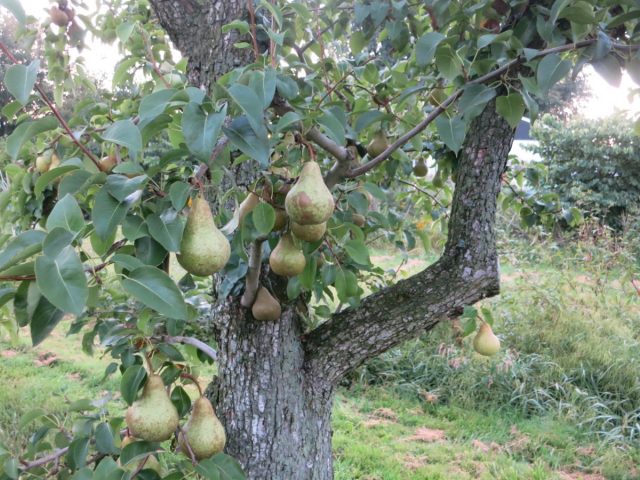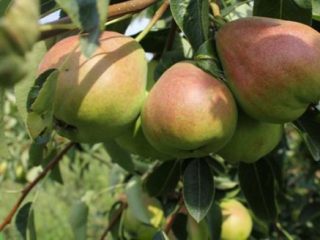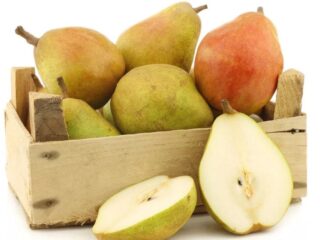Content
The bark on the pear trunk cracks for various reasons, often associated with temperature changes, winter frosts and sunburn. But sometimes damage to the surface layer occurs due to improper care. The main methods of treatment and prevention are described in the article.
Why does the bark of a young pear crack and peel off?
Cracking of pear bark occurs for a variety of reasons. Even if a tree is well cared for, it can suffer from frost and temperature changes. Sunburn, diseases and insect infestations cannot be ruled out. The main reasons are described in the following sections.
Frostbreakers
Very often, the appearance of cracks is associated with unfavorable weather conditions in winter. These include not only severe frosts, but also temperature changes, as well as high air humidity. If it periodically gets warm and then suddenly gets cold, moisture is absorbed into the bark and hardens, greatly increasing in volume. After this, the surface layer is greatly compressed, and the bark begins to crack. The resulting cracks are called frost holes.
In winter, there may be several similar cycles associated with temperature changes. As a result, the damaged areas become even larger. Therefore, if in the spring it turns out that the trunk of a pear or large branches have cracked, the reason is most likely related to unfavorable weather.
Diseases

Bark may crack due to black cancer
Another reason why the bark of a pear tree cracks is related to diseases. Most often this occurs due to black cancer (another name is Antonov fire). The disease is of fungal origin. It leads to active loss of moisture from the tissues of the cambium and bark. As a result, the following symptoms appear:
- black, “charred” spots;
- drying of leaves;
- falling of flowers and ovaries.
Due to cancer, the pear bark may crack, development slows down, and the yield drops significantly. Typically, pathogenic fungi penetrate through frost holes. Therefore, the infection often appears precisely after an extreme winter with little snow. In some cases, the disease spreads so quickly that even young, healthy pears die in just 3-4 months.
Another reason why the bark may crack is due to cytosporosis. This is a fungal infection that causes branches to dry out and die. However, they do not change color, which makes it quite difficult to recognize the pathology in the early stages.
Pests
The pear bark begins to crack due to exposure to pests. They can be roughly divided into two groups:
- Insects that gnaw small passages in the thickness of the bark. They also damage bast and other tissues. These are the bark beetle, click beetle and weevil.As a rule, it is difficult to notice them on the surface, since the pests go under the bark. An invasion can be determined by the presence of small holes (entrances and exits). The bark will crack, dry out, and the shoots will bend.
- Sucking insects - aphids and bedbugs. They feed on plant juices of young shoots and soft tissues. Because of this, the pear bark will also suffer - it will begin to dry out and crack.
Separately, we should consider such an insect as the bark beetle. This is a small black beetle whose body length reaches only 4 mm. Very dangerous, activated during flowering. It can fly long distances and attacks pears, apple trees and other crops. On a tree, females gnaw tunnels under the bark and lay eggs, and it is almost impossible to notice pests.
The eggs hatch into larvae that also make passages in the wood tissue. The following spring they pupate, new beetles emerge, and the cycle repeats. Due to the gnawed passages, the pear bark will crack. This will have a bad effect on productivity.
If the flour is white and deep-lying tissues are also damaged, the tree may die.

The surface layer may crack due to weevils, aphids and other pests
Sunburn
If the bark on a pear tree is cracked and peeling, it may also be due to sunburn. Moreover, it is not the sun’s rays themselves that are dangerous, but temperature changes. Usually in March in the regions of the middle zone the weather changes dramatically. During the day the sun is already very hot, and at night the temperature drops, often down to -10 degrees.
Cells are activated due to exposure to heat, but due to a sharp jump they die.As a result, the bark will crack and deform. These processes are more active due to unmelted snow. Sunburn is especially dangerous for young trees that have not yet developed a strong enough bark. In this case, burns most often affect not pear trees, but apple, cherry, peach and plum trees.
Excess nitrogen fertilizers
If the bark of a young pear cracks, the reason may also be due to an excess of nitrogen compounds. Gardeners apply such fertilizing to quickly gain green mass, and in general this is the right measure. But it is important to follow the dosage, since overfeeding is often more dangerous than underfeeding. If you regularly abuse nitrogen fertilizing, many new shoots will appear, and in winter a significant part of them will freeze.
Another serious mistake is related to the timing of nitrogen fertilizing. If you give them in the second half of summer or autumn, the tree will not be able to prepare for the dormant period. It will continue to grow, the branches will suffer from frost, and the bark will begin to crack.
Rodents
In winter and spring, trees are also damaged by pests - primarily mice and hares. They feed on young bark, which causes water to accumulate in the holes. Then it freezes and increases in volume, causing cracks to form. The situation is aggravated by temperature changes and the lack of sufficient snow.
What to do if cracks appear on the pear trunk
If cracks appear on the pear trunk, it is necessary to begin treatment as soon as possible. The affected area is carefully cleaned with a sharp knife. First, the blade is disinfected in a solution of potassium permanganate 1 g per 1 liter.
After this, leave the wound for several hours to dry and treat with one of the following drugs:
- Bordeaux mixture 2%;
- iron sulfate 1%;
- fungicide (according to instructions);
- potassium permanganate 1 g per 1 liter.

In the spring, after pruning, pears are treated with fungicides.
After thoroughly spraying, you need to wait until the surface is completely dry again. Then they are treated with garden varnish. You can purchase it or make it yourself by mixing clay and mullein in a 1:1 ratio.
The last stage of treatment is to apply a fabric bandage to the affected area where the pear bark has begun to crack. You can use any natural fabric as a basis, for example, cotton or burlap. It is tied with ropes or special tape. You cannot use wire - new wounds may occur.
Prevention measures
If the bark of a pear cracks, it is not always easy to treat the tree, and in some cases it is impossible to help it. Therefore, it is recommended to follow preventive measures in order to prevent such problems. One of the important techniques is shelter, which is especially important for regions with frosty and little snow winters. It is also recommended to bleach the trunks every year and apply fertilizing in a timely manner.
Whitewash
To prevent sunburn, it is recommended to whiten tree trunks and branches every spring with lime milk at a concentration of 20%. Both the trunk itself and large skeletal branches of the first and second tiers are whitewashed. Copper sulfate and casein glue should be added to lime milk to prevent diseases and protect against damage from frozen drops of moisture.
Shelter

To prevent the pear trunk from cracking, it is necessary to prepare the tree for winter
After pruning in the fall, all plant debris is taken away and burned. The tree trunk circle is mulched with peat, hay, sawdust and other materials (layer height of at least 10 cm).
But in regions with frosty winters this is not enough.To prevent the bark from cracking due to extreme temperatures, the trunk and large branches of the pear are tied with newsprint. You can also wrap it in spruce branches or reeds (in the south there is no need to do this).
Newsprint protects the tree well from adverse weather. It retains heat and prevents the trunk from overheating under the bright spring sun. It also protects against rain because it gets wet first and dries fairly quickly. Thanks to this, the pear bark will not crack.
Top dressing
To prevent cracking, it is necessary to carefully observe the rate of application of nitrogen fertilizers. At the end of March or early April, it is enough to give the pear 100 g of urea or 20 g of ammonium nitrate. Instead, you can use liquid organic matter, for example, an infusion of 500 g of litter per 10 liters of water.
To prevent the pear bark from cracking, in the fall after pruning it is recommended to dust the tree trunk circle with wood ash (about 200 g per square meter). Instead, you can give superphosphate and potassium sulfate (30 g each). These substances help strengthen the root system and increase winter hardiness.
Conclusion
The bark on the pear trunk cracks mainly due to unfavorable weather and improper care. The cause may also be related to pest infestation or fungal diseases. Therefore, for prevention, it is necessary to treat with fungicides every spring. In the summer, trees are periodically inspected and if signs of insect infestation appear, they are sprayed with insecticides.








